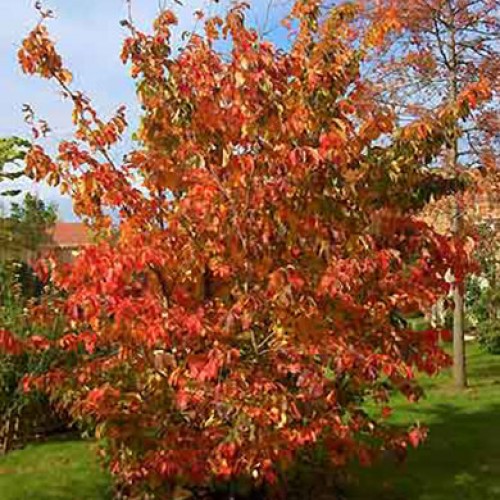
Persian Ironwood Parrotia Persica Spire ScotPlants Direct UK
Common Name: Persian ironwood Type: Tree Family: Hamamelidaceae Zone: 4 to 8 Height: 20.00 to 25.00 feet Spread: 8.00 to 10.00 feet Bloom Time: March to April Bloom Description: Red Sun: Full sun Water: Medium Maintenance: Medium Suggested Use: Street Tree Flower: Insignificant Leaf: Colorful, Good Fall Other: Winter Interest Garden locations
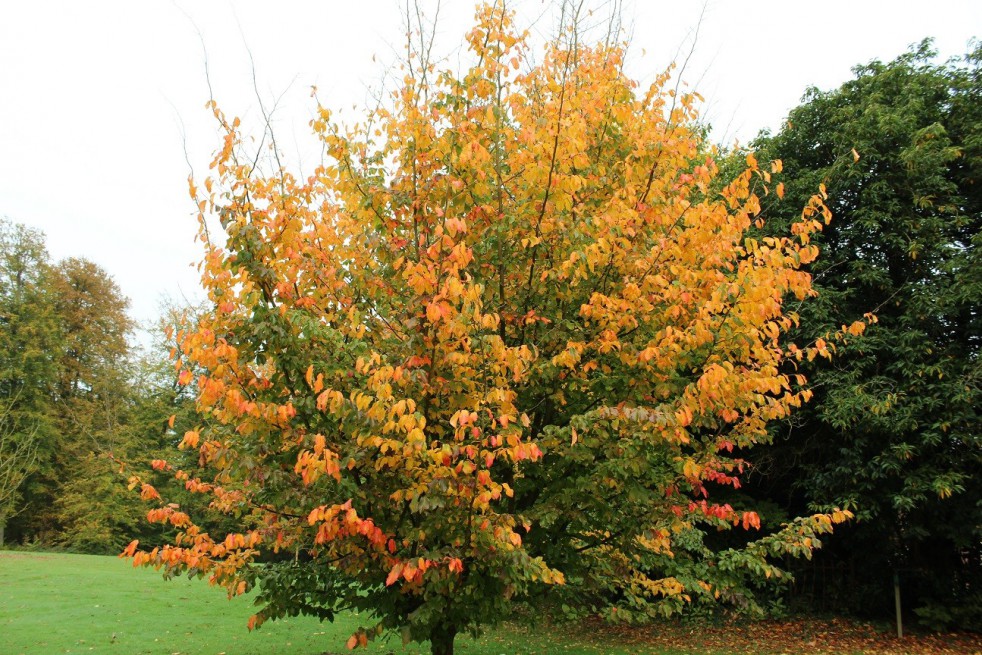
Persian ironwood Parrotia Persica
Parrotia persica, or Persian ironwood, is a unique and beautiful winter-blooming specimen tree. Its unusual flowers emerge on leafless stems in late February and last for up to a month, providing valuable late-winter interest in the garden.

Parrotia persica Buy Persian Ironwood Trees
Persian Ironwood, An excellent small-scale shade tree with a colorful, spreading canopy of thick foliage that emerges reddish purple to bronze in spring and mat

Parrotia persica Persian Ironwood Tree Free Delivery
Description The Persian ironwood is small to a medium-sized, slow-growing, deciduous tree that grows up to 15 to 30 feet in height and is equally as wide. It has a rounded, upright habit with spreading branches, and will often have several trunks. It may also be grown as a large multi-stemmed shrub that reaches 15 feet in height.

Buy Parrotia persica 'Persian Spire™' Columnar Persian Ironwood Mr Maple │ Buy Japanese Maple
Parrotia persica (commonly called Persian ironwood) is a wide spreading (8 to 15 m), often multi stemmed deciduous tree or large shrub that grows to 8m tall. The bark is smooth, pinkish brown flaking/peeling to leave cinnamon, pink, green, and pale yellow patches in a similar manner to London plane. Leaves are glossy green, turning a rich.

Parrotia persica Persian ironwood Van den Berk Nurseries
Parrotia persica, also known as Persian ironwood, is a deciduous tree mainly grown for its spectacular autumn display when its leaves turn shades of yellow, orange, red and purple. It's a wide-spreading, slow growing tree with bark that flakes away, creating an interesting texture and revealing younger bark below.

Persian Ironwood (Parrotia persica) in 2021 Trees to plant, Perfect plants, Shade trees
last updated December 21, 2022 The first time you see a Persian ironwood tree ( Parrotia persica ), you might think it would be better called a shrub. It is a tree that grows with many trunks and doesn't get to a towering height, making it a good choice for smaller gardens.

Parrotia persica Persian Ironwood Ornamental Garden Tree 56ft 5051641044743 eBay
Parrotia persica, commonly known as the Persian Ironwood, is a deciduous tree celebrated for its multi-seasonal interest, which includes vibrant autumn foliage, subtle yet captivating winter flowers, and exquisite bark. Parrotia persica: An In-depth Look
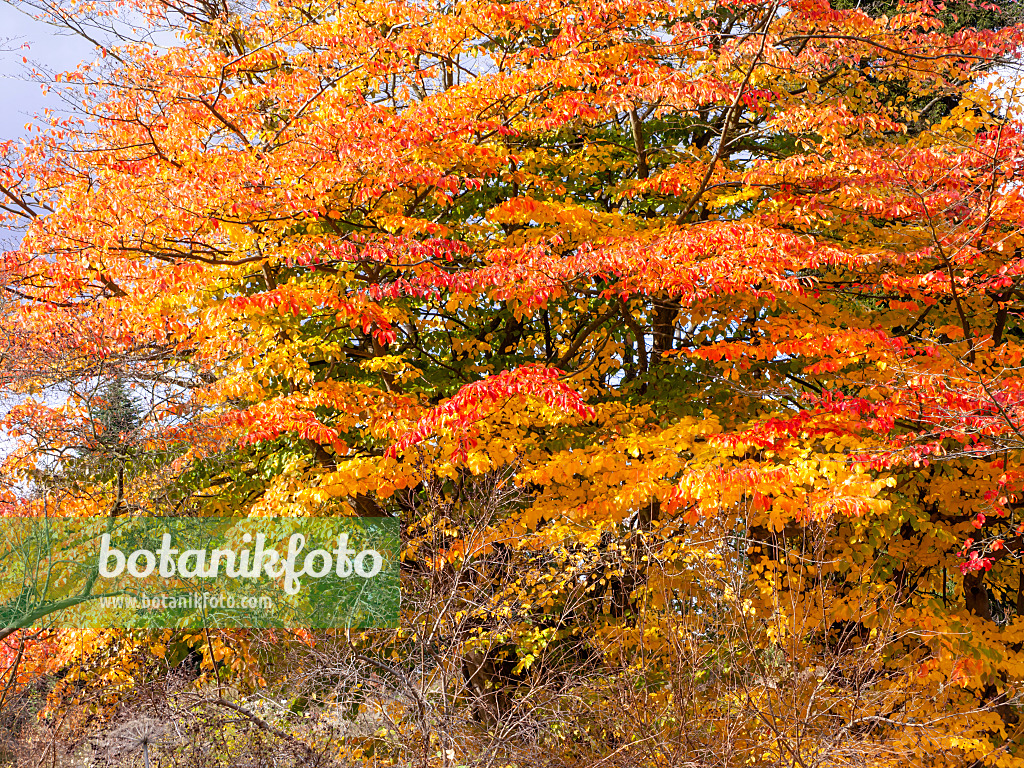
Image Persian ironwood (Parrotia persica) 465220 Images of Plants and Gardens botanikfoto
Parrotia persica or Persian ironwood is a small, single trunk, deciduous tree eventually growing 20-40 feet tall (but typically 10 feet after 7-8 years) or a large, multi-stemmed shrub growing to 15 feet tall. Apetulous flowers with dense, red stamens surrounded by brownish bracts appear in late winter to early spring before the foliage.

Parrotia persica Persian ironwood Van den Berk Nurseries
Common names: Persian ironwood, parrotia, Persian parrotia All pictures (3) Share Overview More Information Care Knowledge Cultivars Photo Gallery (3) Parrotia persica (DC.) C. A. Meyer (Persian ironwood), growth habit, tree form; © John Hagstrom Parrotia persica (DC.) C. A. Meyer (Persian ironwood), leaves; © John Hagstrom Parrotia persica (DC.)
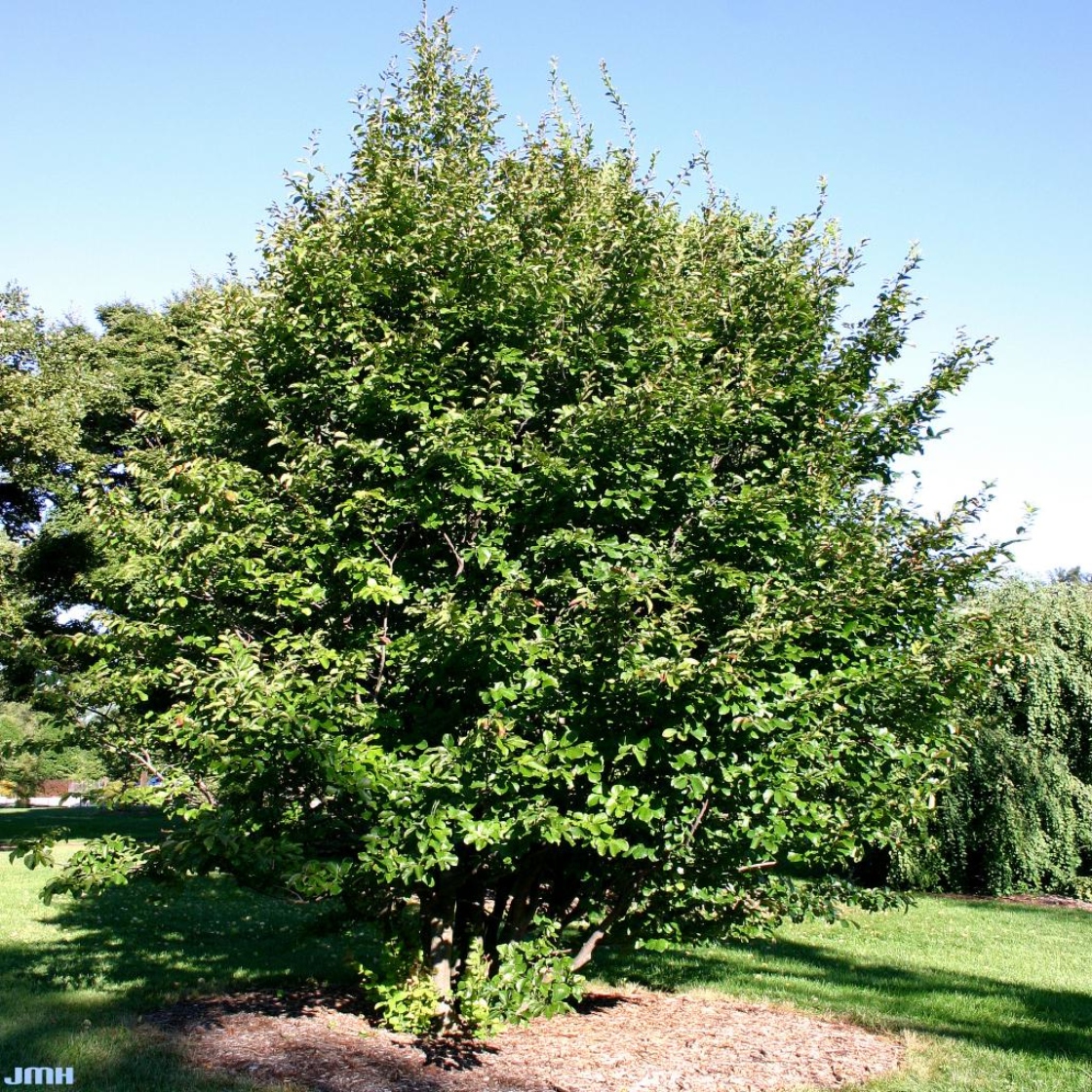
Persian ironwood The Morton Arboretum
Parrotia persica, the Persian ironwood, is a deciduous tree in the family Hamamelidaceae, closely related to the witch-hazel genus Hamamelis. It is native to Iran's Caspian region (where it is called انجیلیanjili) and Iranian Azerbaijan (where it is called Dəmirağacı ).

Parrotia persica Persian ironwood Van den Berk Nurseries
101 Family: Hamamelidaceae Genus and species: Parrotia persica Description: Originating from Iran, this Persian Ironwood is situated in a patch of grass, between two other trees. While the tree may be small in width, it makes up for its narrow base with a plethora of branches, and orange leaves.
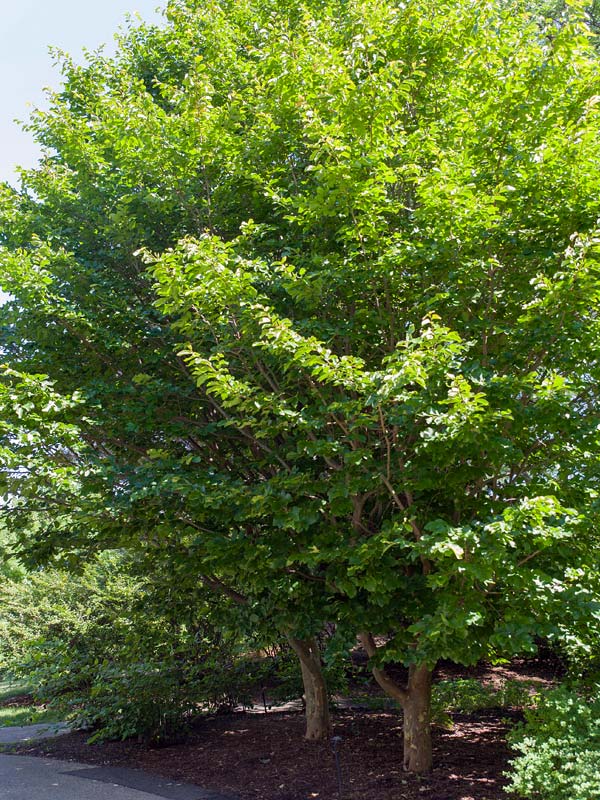
Persian Ironwood Chicago Botanic Garden
Persian Ironwood Pronunciation: par-RO-ti-a PER-si-ka Family: Hamamelidaceae Genus: Parrotia Type: Broadleaf Native to (or naturalized in) Oregon: No Broadleaf deciduous tree/shrub, 20-50 ft (6-15 m) high, rounded, upright, wide spreading branches, often with several trunks. Bark exfoliating, producing a mosaic of green, white and brown.

Parrotia persica Persian Ironwood Trees Speciality Trees
Parrotia persica|Persian ironwood/RHS Gardening Shrubs Trees Parrotia persica Persian ironwood P. persica is a wide-spreading, often multi-stemmed deciduous tree or large shrub to 8m, with attractive flaking bark. Leaves turn yellow, red and purple in autumn. Small crimson flowers on bare twigs Other common names iron tree ironwood

The autumn foliage of Persian ironwood, Parrotia persica. Small trees for garden, Landscape
The Persian ironwood ( Parrotia persica) was thought to be the only member of its genus until Chinese ironwood ( Parrotia subaequalis) was identified as a sibling species in 1992. The layered canopy of our oldest Persian ironwood ( Parrotia persica) shimmers as leaves dance in the wind, mimicking clusters of defocused lights.

Persian ironwood tree, Parrotia persica English Country Gardens, Country Gardening, Ironwood
The Persian ironwood is an ornamental workhorse in the witch-hazel family (Hamamelidaceae) and is one of two species in its genus. Documented collections of Parrotia persica in public gardens tend to be from nurseries, and plants of known wild provenance are mostly sourced from populations in Iran.